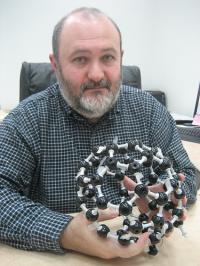The researchers revealed that, contrary to popular belief, the mucosa, that thick coating that lines the respiratory tract, the digestive system and the reproductive system, is not a neutral lubricant, but that they may play an important role in introducing toxic substances, such as petroleum products, into the cells. This feature may also serve as a new mechanism for the introduction of drugs

Is our body vulnerable to toxins, which we thought we were protected from due to their insolubility in water? It turns out that this is indeed the case. New studies by researchers from Tel Aviv University show that the mucous membrane - that thick substance that covers the internal organs of the body, which have contact with the environment such as the respiratory system, the digestive system (including the saliva in the mouth) and in women - the reproductive system - is not an indifferent substance. It turns out that it may have an active role in the introduction of substances that do not dissolve in water, including substances that are toxic and carcinogenic to the cells in the body (polycyclic aromatic substances) found, for example, in petroleum products, which are formed in the process of partial combustion of fuels used in cars, heaters, cooking, etc. The researchers believe that in the future it will be possible to use the discovery to inject into the body drugs that are not soluble in water.
In a series of articles published in scientific journals recently, researchers led by Dr. Michael Gozin from the School of Chemistry in the Faculty of Exact Sciences at Tel Aviv University and Dr. Dan Farr from the Department of Biology at Tel Aviv University succeeded in introducing substances, some of them dangerous, into cell cultures from the digestive tract and into bacterial cells soaked in a mucous solution.
"Until now, the mucosa was considered a mechanical and chemical protective membrane. We did not anticipate that it would actually be the one that would absorb the fatty substances and improve their transfer into the body's systems. It turns out that this is not the case", explains Dr. Guzin.
In the latest study published at the end of February 2011 in the journal of the American Chemical Society dealing with poisons - Chemical Research In Toxicology, Dr. Guzin, Dr. Parr and their staff describe how toxic substances found in oil were dissolved in water with the help of mukin proteins - the main component of the mucosa.
Later, the researchers soaked single-celled creatures in these solutions, and found that the penetration of fatty substances into the cells was much faster than the situation where the mucous protein is not in the solution. "We do not know the mechanism through which these substances penetrated the cell membranes. It is clear that this is not a simple flutter. It is estimated that this is a process similar to endocytosis - absorbing a substance into the cell by trapping it in the inward folding of the cell membrane, and closing the folding as a vesicle," explains Dr. Guzin.
In a previous study, published in 2010 in the journal Small, which deals with the field of nanotechnology, members of Dr. Gozin's team showed that even nanometer materials such as fullerenes (nanometer-sized spheres) and nanotubes can also be dissolved in a physiological solution by Mukin proteins.
"It will be possible to harness the system we discovered to introduce drugs that are not soluble in water into the body, either through the respiratory tract (then the drugs enter the body through the lungs) or by swallowing for delayed release
and absorption later in the digestive system after the stomach." Dr. Guzin explains. In the next phase of the research, the researchers will try to develop systems for delivering water-insoluble drugs.

2 תגובות
In my opinion, this article does not fit its title, which explains something a little different than what is written in the article, in my opinion, to change it in consultation with the editor-in-chief, but nevertheless, all the best for this nice article!
It is not new knowledge that many medicines come in inhalers